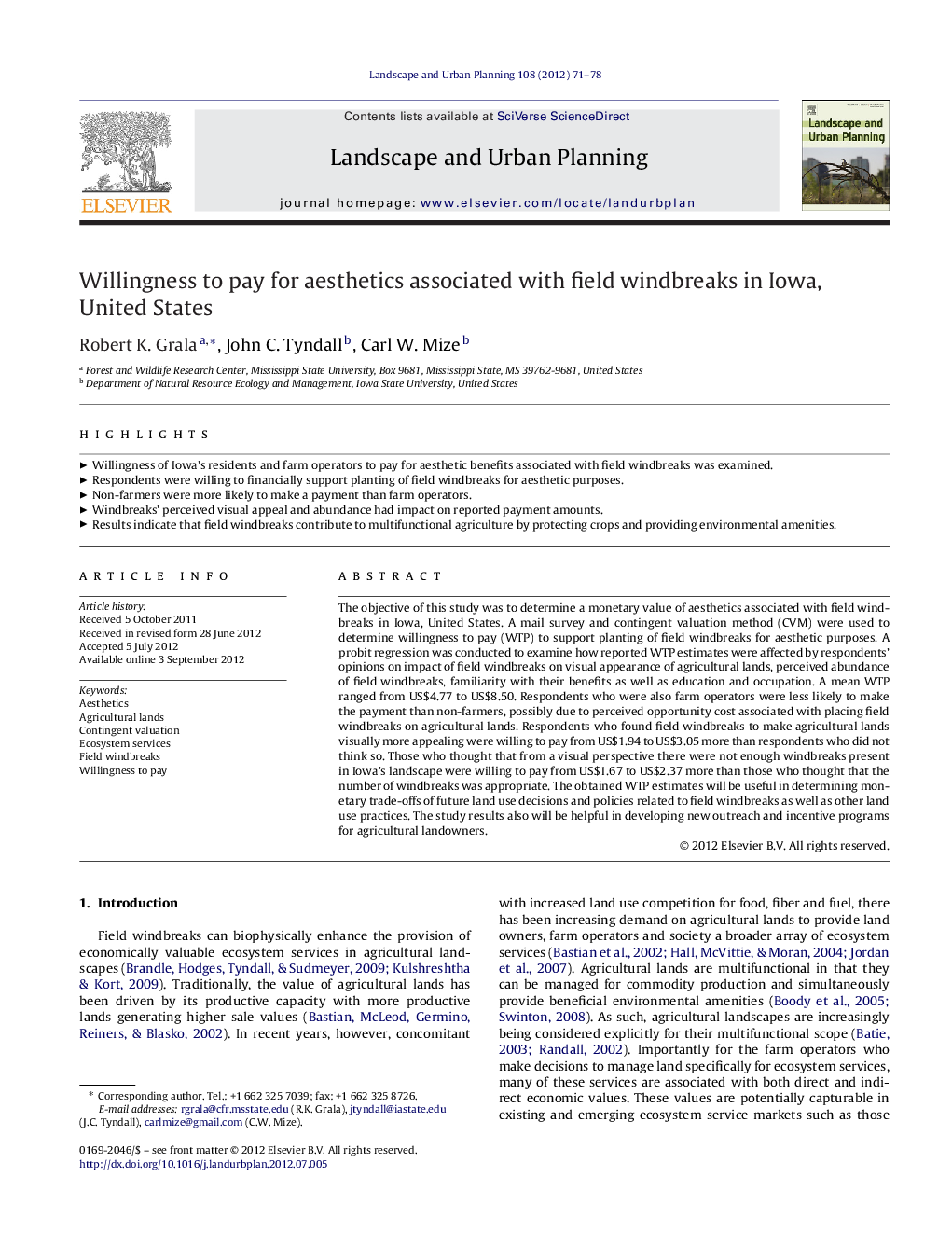| Article ID | Journal | Published Year | Pages | File Type |
|---|---|---|---|---|
| 1049378 | Landscape and Urban Planning | 2012 | 8 Pages |
The objective of this study was to determine a monetary value of aesthetics associated with field windbreaks in Iowa, United States. A mail survey and contingent valuation method (CVM) were used to determine willingness to pay (WTP) to support planting of field windbreaks for aesthetic purposes. A probit regression was conducted to examine how reported WTP estimates were affected by respondents’ opinions on impact of field windbreaks on visual appearance of agricultural lands, perceived abundance of field windbreaks, familiarity with their benefits as well as education and occupation. A mean WTP ranged from US$4.77 to US$8.50. Respondents who were also farm operators were less likely to make the payment than non-farmers, possibly due to perceived opportunity cost associated with placing field windbreaks on agricultural lands. Respondents who found field windbreaks to make agricultural lands visually more appealing were willing to pay from US$1.94 to US$3.05 more than respondents who did not think so. Those who thought that from a visual perspective there were not enough windbreaks present in Iowa's landscape were willing to pay from US$1.67 to US$2.37 more than those who thought that the number of windbreaks was appropriate. The obtained WTP estimates will be useful in determining monetary trade-offs of future land use decisions and policies related to field windbreaks as well as other land use practices. The study results also will be helpful in developing new outreach and incentive programs for agricultural landowners.
► Willingness of Iowa's residents and farm operators to pay for aesthetic benefits associated with field windbreaks was examined. ► Respondents were willing to financially support planting of field windbreaks for aesthetic purposes. ► Non-farmers were more likely to make a payment than farm operators. ► Windbreaks’ perceived visual appeal and abundance had impact on reported payment amounts. ► Results indicate that field windbreaks contribute to multifunctional agriculture by protecting crops and providing environmental amenities.
